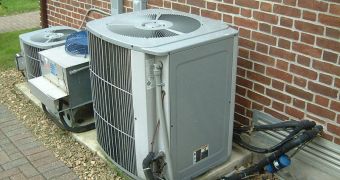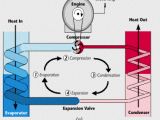We depend on them whether it is winter or summer, however if you have been staying in house for the last three days with all the doors and windows closed, without your air conditioning unit on, and you feel a slight headache maybe it's time to open the window to let some fresh air in; your life may depend on it! In fact, this is the AC unit's main purpose, to condition air, meaning to replace the stagnated air filled with carbon dioxide with oxygen rich air.
Nevertheless, mankind's ingenuity and necessity added further modifications to the AC unit, such as heating or cooling the replaced air, depending on the seasons, and dehumidifying it in order to get rid of the unwanted consequences of increased air humidity.
A basic AC unit consists of three main components: the fans, which force the fresh air into the enclosed space, respectively draw the stagnated air out of the room, a degassing and filtering unit and the thermal unit that ensures the heating and the cooling process of the air.
Air is drawn from the atmosphere into the device with the help of fans, which force it into a thermal degassing unit that eliminates the unwanted water vapors and particles from the air, through a thermal process of cooling the air below the temperatures at which water evaporates and turns into water droplets that are easily filtered; after this, it is sent towards the cooling/heating unit. Furthermore, additional air filters are necessary to extract the dust particles present in the form of suspensions in the air and to eliminate any bad smells.
After the filtering and smell removal process, the air is ready to go into the cooling/heating process. Heating the air is made relatively simple due to the laws of thermodynamics, which state that the heat moves from higher temperatures to lower ones in order to reach a thermodynamics equilibrium. However, the cooling process requires reversed heat pumps cycles similar to those used commonly in refrigerators.
Refrigeration systems work by compressing and evaporating a gas within an enclosed circuit, consisting of two distinctive compartments. The gas is being pumped from the cooling compartment containing vapor of the respective gas and is compressed into a liquid, during which time the substance heats up and releases the energy into the surrounding medium, while traveling through a coiled condensing circuit. After the substance has passed through the whole length of the condensing circuit, it is ventilated through an expansion valve, which turns the liquid back into a gas. This reaction takes place with heat absorption, thus cooling the air that passed over the evaporating circuit, which is released into the room.
Although it may seen as a rich-man's gadget for most of us, such devices are virtually indispensable during every day life, from providing fresh air for the underground mining industry to laboratories which require a dust free environment, and ventilating high altitude airplanes.
Also, there have been some concerns regarding the fact that the AC units could help the spreading of several micro-organisms, like Legionella pneumophila. The actual growth and spread of such bacteria presents a relative low risk, and is mostly confined to large centralized AC units used in large buildings, that are poorly maintained.

 14 DAY TRIAL //
14 DAY TRIAL // 
